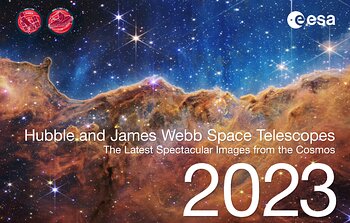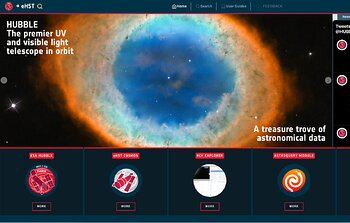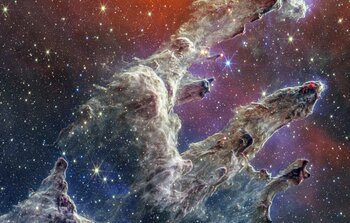-By Chris Evans-
As we approach the end of 2022, it is a good time to reflect on the past 12 months and to highlight some of the recent activities on both Hubble and Webb.
To round off a spectacular year, we have just had the First Science with JWST conference here in Baltimore. With over 400 participants joining either in person or online, it was a timely opportunity to take stock of the early breakthroughs from JWST, and to look ahead now that we have seen some of what this fantastic observatory can do across a broad range of fields.
If you’re interested in learning more about Europe’s contribution to Webb’s science instruments, let me draw your attention to two recent ESA articles on NIRSpec and MIRI. These give some of the background history to the development of the two instruments (that together account for almost 69% of the time awarded in Cycle 1), as well as some of the technical challenges that the teams surmounted to deliver the exceptional performance that we are now seeing the fruits of in science operations. In this newsletter, we've also provided a review of the breathtaking images and exciting science discoveries from Webb in its first months of operations (learn more here).
Hubble has also continued to provide us with exciting new discoveries in 2022 thanks to its unique capabilities (learn more here). In support of its rich data legacy, we are also pleased to announce a substantial development of the European Hubble Space Telescope (eHST) Science Archive. This release brings a new look and feel to the user interface, with the goal of enabling simple exploration of more than 1.5 million HST observations now in the archive. Learn more here.
STScI recently issued a community survey on data access policies for both missions, including the exclusive access periods, so if you’re a past, current or future user of Hubble or Webb, please provide your views here.
Moving into the new year, we have the proposal deadline for JWST Cycle 2 on 27 January 2023 (20:00 Eastern US Time) and we look forward to seeing what exciting new ideas and ambitious programmes you have in mind. Ahead of that, let me wish you and your families all the best for the holiday season, and a fruitful and rewarding 2023.
Chris Evans
ESA/HST & ESA/JWST Project Scientist
ESA Office, STScI Baltimore, USA
Email: hubblenewseurope@stsci.edu

|
19 December 2022: -By Bethany Downer -
To celebrate another year of exciting images and discoveries from the NASA/ESA Hubble Space Telescope, and the first year of operations with the NASA/ESA/CSA James Webb Space Telescope, ESA/Hubble and ESA/Webb have released a new calendar that showcases beautiful imagery from both missions for 2023.
The 2023 calendar features a selection of images from Press Releases …
|
| Read more |

|
19 December 2022: -By María Arévalo Sánchez, Javier Espinosa Aranda, Mónica Fernández Barreiro, Marcos López-Caniego Alcarria, Francisco Javier Ballester Arenas, Bruno Merín, Chris Evans, Paule Sonnentrucker-
We are delighted to announce the release of a new version of the European Hubble Space Telescope (eHST) Science Archive, hosted at ESA’s European Space Astronomy Centre (ESAC) in Madrid. The ESAC Science Data …
|
| Read more |

|
19 December 2022: -By Bethany Downer-
2022 was another busy year for the NASA/ESA Hubble Space Telescope.
In 2022 scientists throughout Europe published a large number of exciting new results. Of the various ESA/Hubble science releases published this year, some memorable scientific news that garnered particular public interest included Hubble’s detection of the light of Earendel, a star that existed within the …
|
| Read more |

|
19 December 2022: -By Bethany Downer and Chris Evans-
2022 marked an eventful year for the ESA/Webb science outreach team.
This was kickstarted by the release of Webb’s first images on 11–12 July 2022. These four image releases quickly became recognisable throughout Europe and around the world. Tens of thousands of articles were published online to showcase the telescope’s capabilities, and more …
|
| Read more |